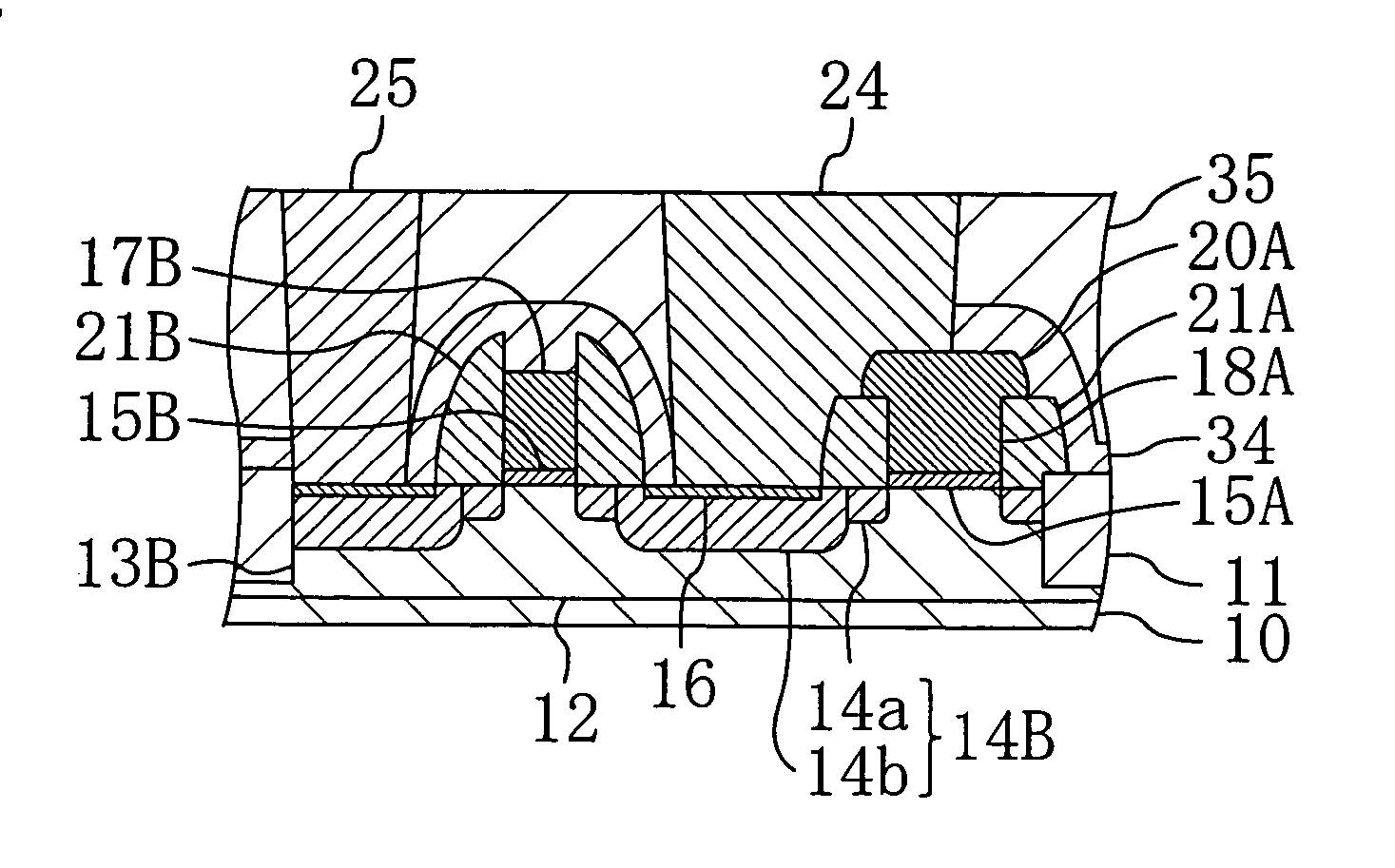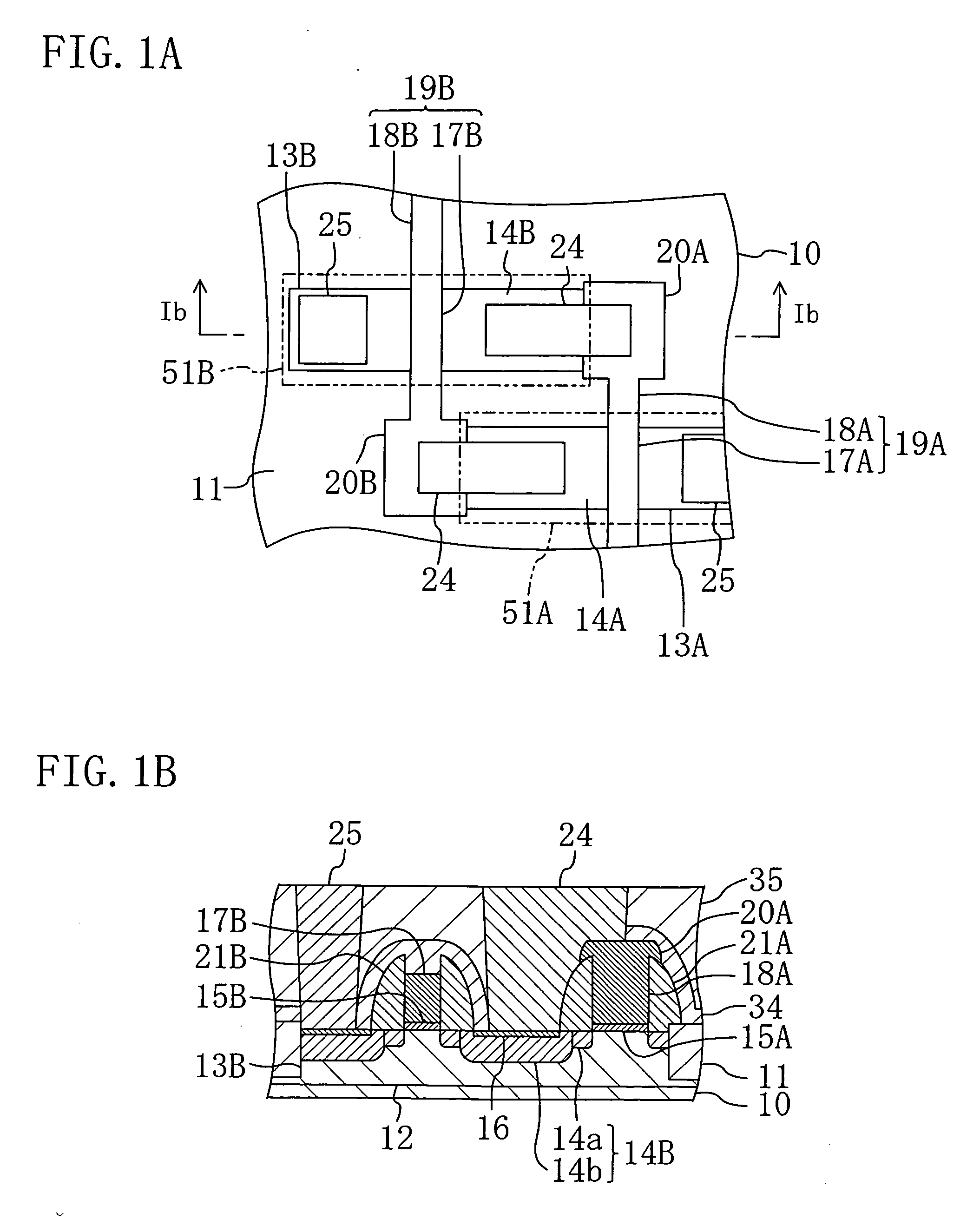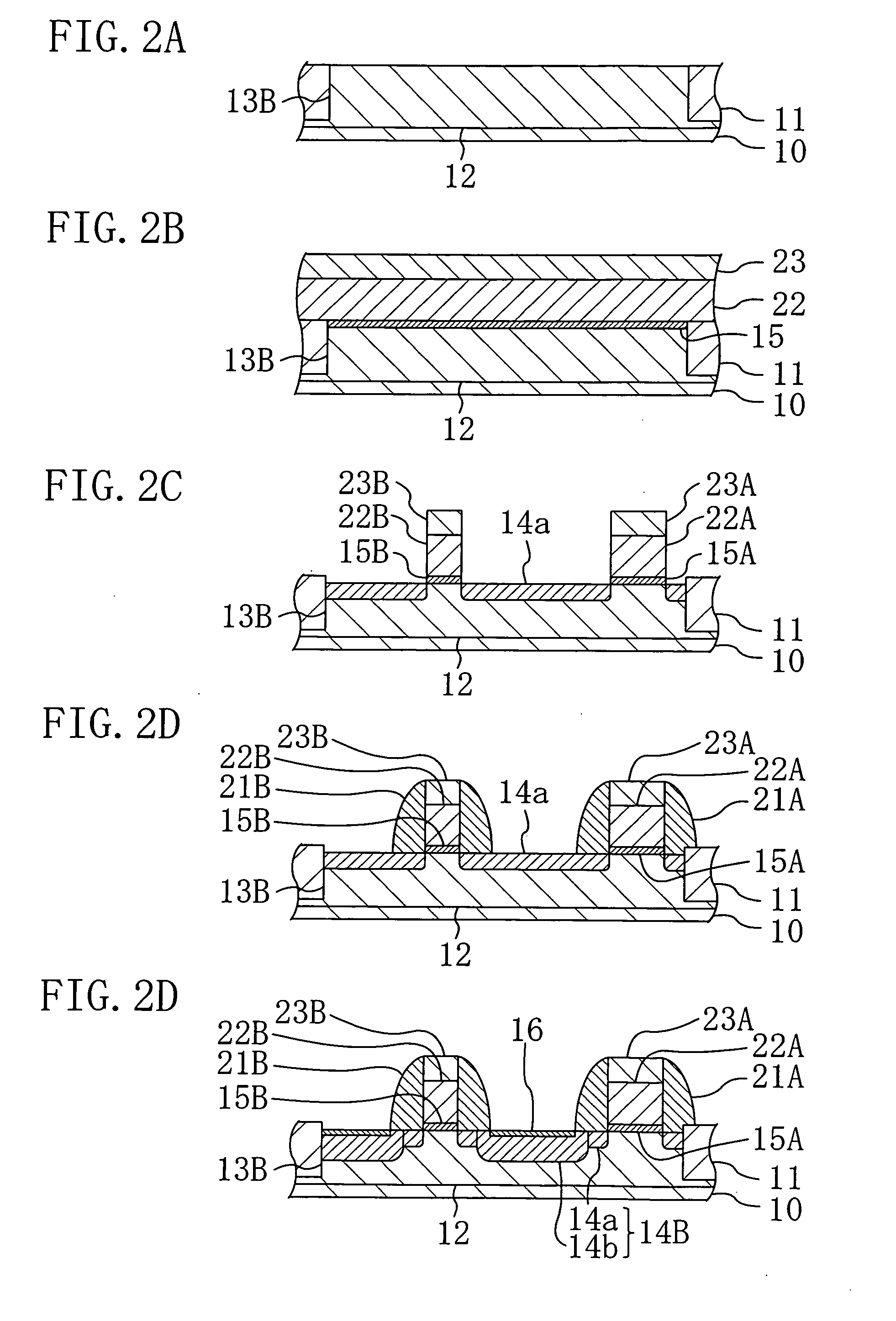Semiconductor device and method for fabricating the same
- Summary
- Abstract
- Description
- Claims
- Application Information
AI Technical Summary
Benefits of technology
Problems solved by technology
Method used
Image
Examples
embodiment 1
[0045] A first embodiment of the present invention will be described with reference to the drawings. FIGS. 1A and 1B illustrate a semiconductor device according to the first embodiment of the present invention. FIG. 1A illustrates a plan structure of the semiconductor device, and FIG. 1B illustrates a cross-sectional structure thereof.
[0046]FIG. 1A illustrates a first transistor 51A formed on a first active region 13A of a semiconductor substrate 10 surrounded by an isolation region 11 thereof and a second transistor 51B formed on a second active region 13B thereof. The first transistor 51A includes a fully silicided first gate electrode 17A and source / drain regions 14A formed in the first active region 13A. The second transistor 51B includes a fully silicided second gate electrode 17B and source / drain regions 14B formed in the second active region 13B. The first and second transistors 51A and 51B are both P-type MIS transistors.
[0047] As illustrated in FIG. 1B, the second transis...
embodiment 2
[0090] A second embodiment of the present invention will be described hereinafter with reference to the drawings. FIGS. 5A and 5B illustrate a semiconductor device according to the second embodiment of the present invention. FIG. 5A illustrates a plan structure of the semiconductor device, and FIG. 5B illustrates a cross-sectional structure thereof taken along the line Vb-Vb. In FIGS. 5A and 5B, the same components as those in FIGS. 1A and 1B are denoted by the same reference numerals, and thus description thereof is not given.
[0091] As illustrated in FIG. 5B, the semiconductor device of this embodiment is configured so that the height of a part of each of first sidewalls 21A formed on both sides of a part of a first interconnect 18A on which associated one of shared contact plugs 24 is formed is lower than that of a part of each of second sidewalls 21B formed on both sides of a second gate electrode 17B. Therefore, the first interconnect 18A can be easily formed, at its region on ...
PUM
 Login to View More
Login to View More Abstract
Description
Claims
Application Information
 Login to View More
Login to View More - R&D
- Intellectual Property
- Life Sciences
- Materials
- Tech Scout
- Unparalleled Data Quality
- Higher Quality Content
- 60% Fewer Hallucinations
Browse by: Latest US Patents, China's latest patents, Technical Efficacy Thesaurus, Application Domain, Technology Topic, Popular Technical Reports.
© 2025 PatSnap. All rights reserved.Legal|Privacy policy|Modern Slavery Act Transparency Statement|Sitemap|About US| Contact US: help@patsnap.com



